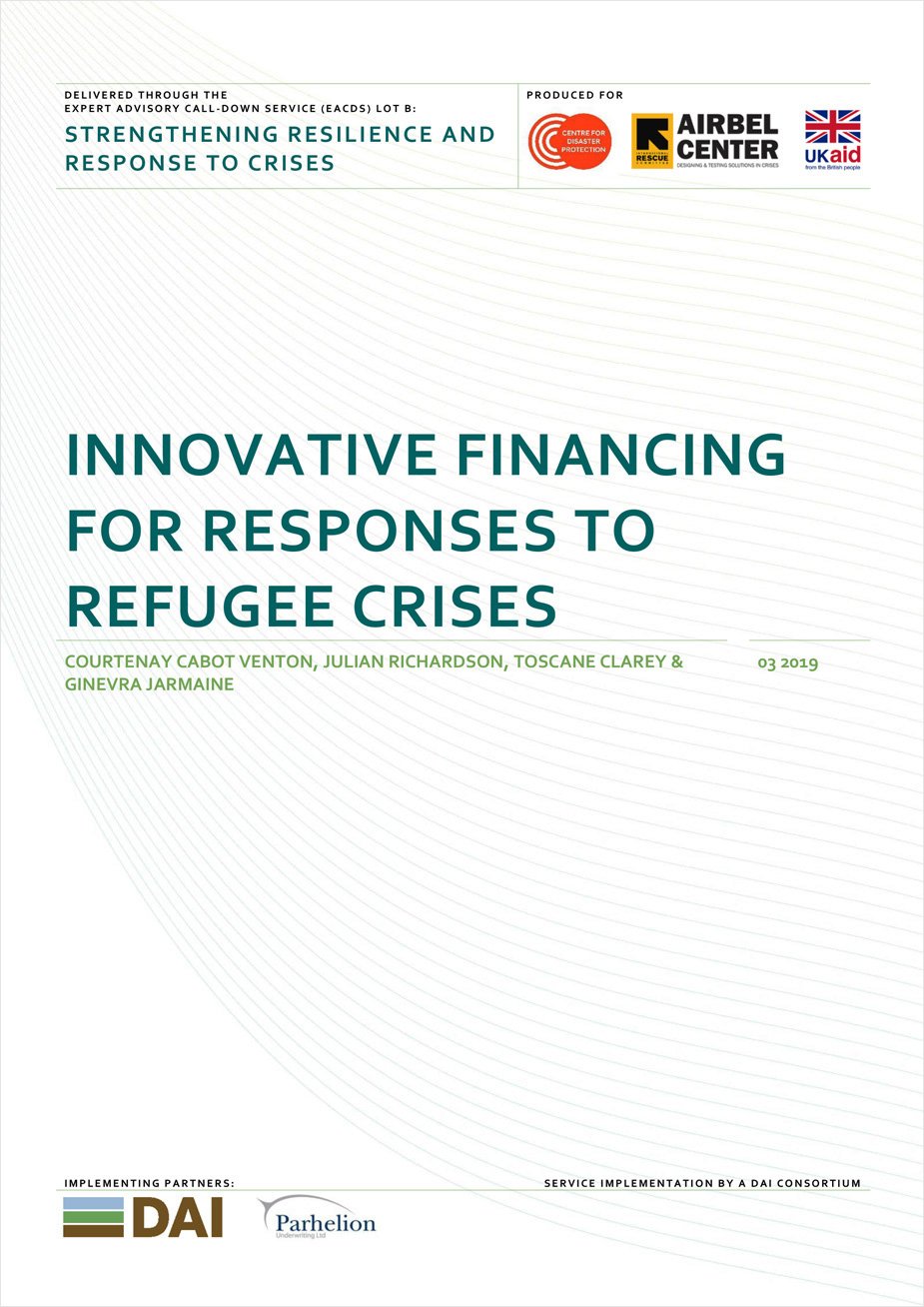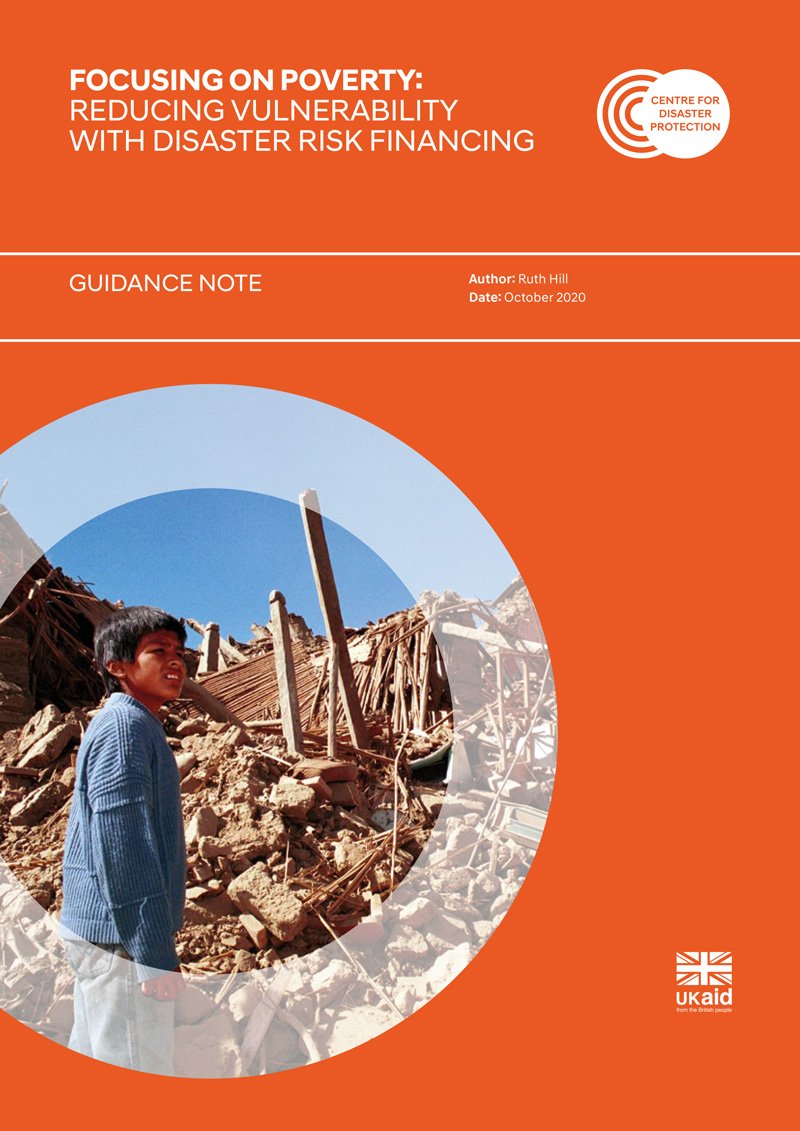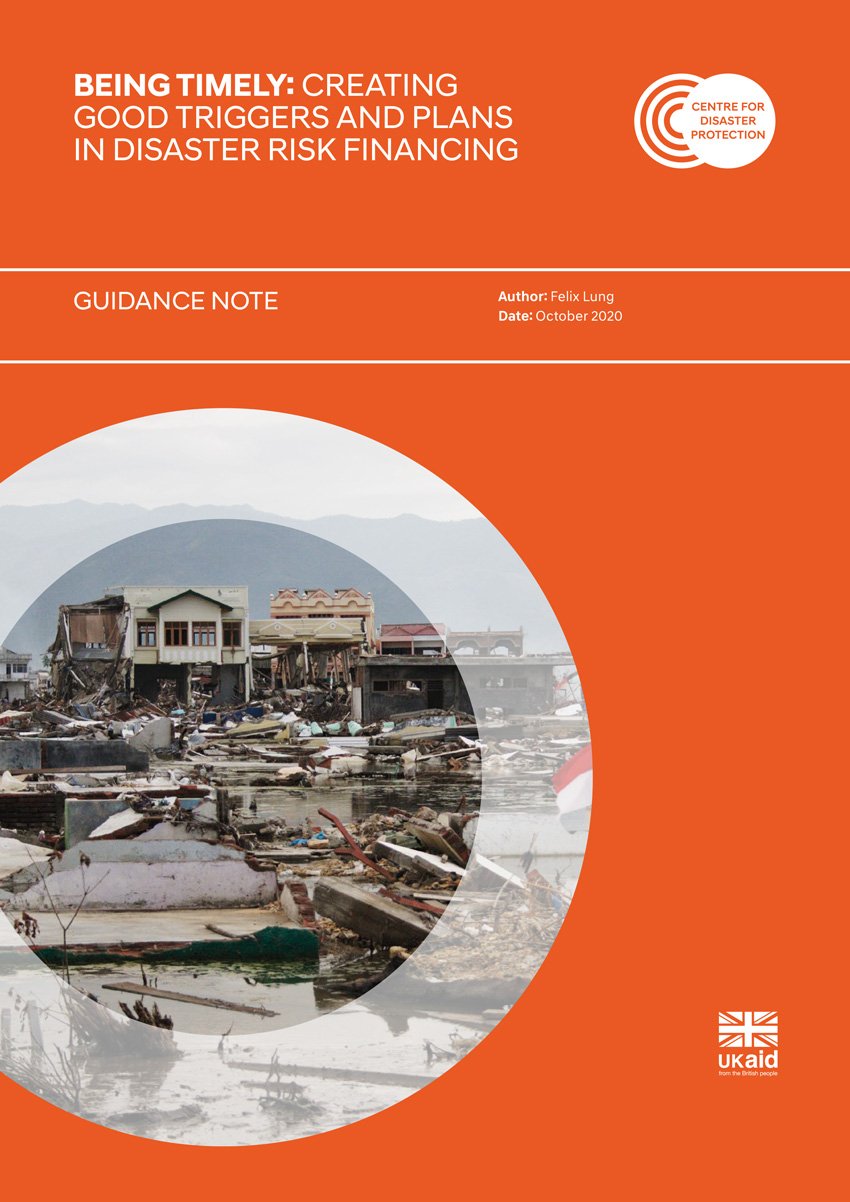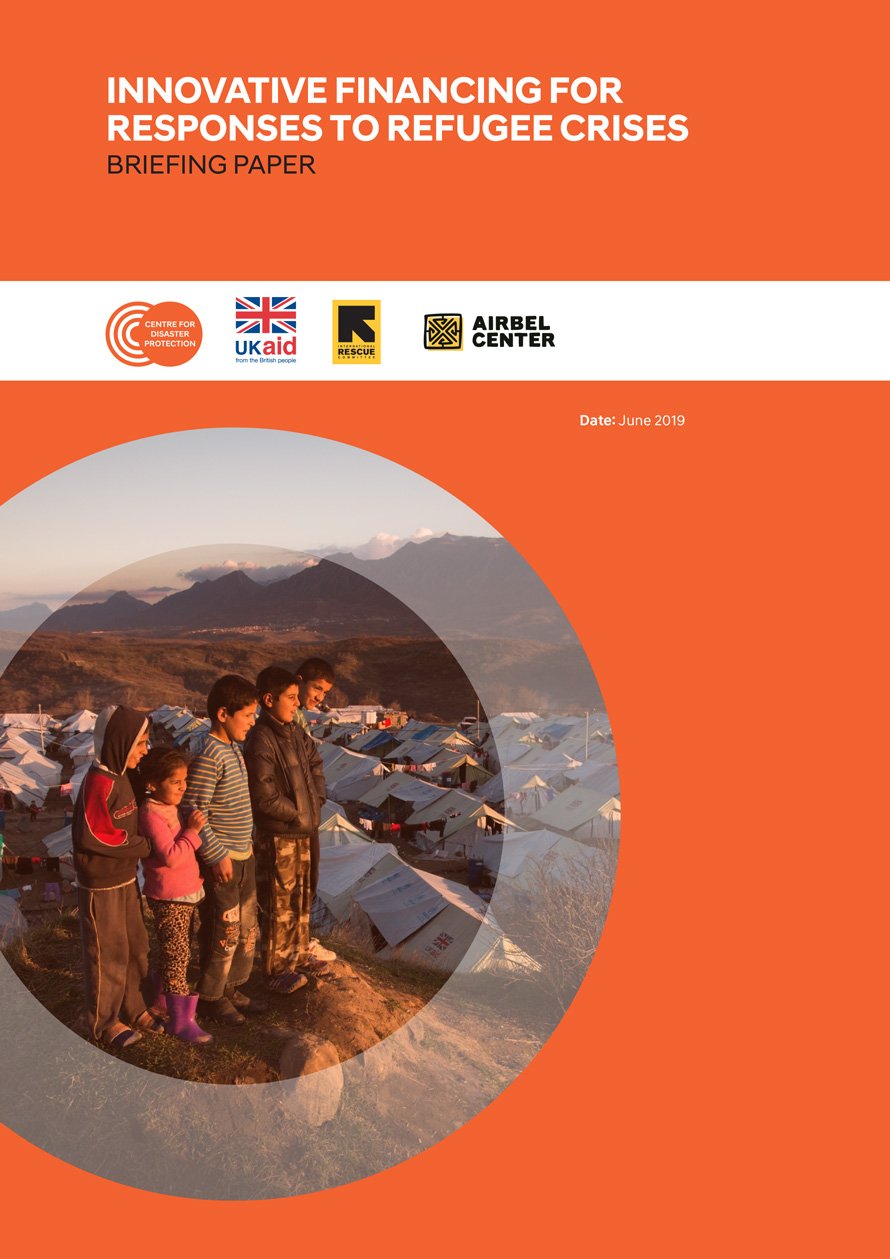INNOVATIVE FINANCING FOR RESPONSES TO REFUGEE CRISES

The growing scale, duration and impact of refugee crises requires innovative approaches to financing that are more efficient, more effective, more equitable, and more sustainable.This report – produced after two Innovation Labs which convened experts spanning the finance, insurance, humanitarian, development and policy fields – lays out a vision for new systems of financing to ensure funds are available rapidly and reliably to respond to the changing nature of global refugee crises.
Related publications
As disaster risk financing (DRF) matures, it needs to better understand and implement accountability—particularly towards the at-risk people it seeks to benefit. There is growing awareness of this, but application remains nascent. This working paper presents a framework for understanding accountability in this context, as well as an overview of implementation in order to stimulate and inform progress.
Disasters have the biggest impact on those that are least able to protect themselves from them: vulnerable people. In most cases the most vulnerable are also the poorest in a society. This guidance note sets out some questions that can be asked during programme design to help ensure that DRF is most directed to those who are least able to withstand shocks.
This guidance note offers practical guidance on contingency planning and triggers for preparing before a disaster strikes to support a faster, more coordinated, and ultimately, more effective response.
There is currently little in the way of rigorous evidence of impact or established ‘best practice’ in DRF. It is important, therefore, that we engage in scrutiny, be open to learning and willing to be held accountable. This guidance note sets out practical ways to ensure quality, independent scrutiny and improved learning in your DRF initiatives.
Ensuring the inclusive participation of people in DRF is essential but challenging. It builds trust and empowers the public to demand greater accountability of governments and reward them for reliable disaster support. This guidance note gives practical advice on consulting and involving communities in decision-making that impacts their lives.
A DRF programme can be sound from a technical angle—but when it fails to consider the broader environment, its impact is diminished. This publication explains the importance of thinking strategically and sets out four principles for taking a strategic approach, with practical advice and resources.
This insight paper examines the challenge of handling basis risk in disaster risk financing systems. It argues how the use of data and management of basis risk has the potential to significantly increase the neutrality and impartiality of humanitarian decision-making, offering a new type of financing and increased accountability.
This paper outlines the current state of anticipatory action and discusses some of the existing evidence on its impact. It is not intended to provide a comprehensive literature review or a meta-analysis of the impacts of early warning or early action initiatives. Rather, it presents some examples of different types of impact associated with a range of anticipatory action in developing countries. This is in recognition of the diversity of anticipatory action mechanisms and variety of activities being implemented in different contexts, as well as the range of studies that have been carried out focusing on different outcomes. The paper also highlights evidence gaps and points out some of the methodological challenges in measuring impact.
The growing scale, duration and impact of refugee crises requires innovative approaches to financing that are more efficient, more effective, more equitable, and more sustainable.This report – produced after two Innovation Labs which convened experts spanning the finance, insurance, humanitarian, development and policy fields – lays out a vision for new systems of financing to ensure funds are available rapidly and reliably to respond to the changing nature of global refugee crises.
$3 billion was allocated to the CRW in IDA18, equivalent to a third of IDA’s total spending on crisis financing. This paper and accompanying policy brief detail how the CRW has been used to date, and identifies a number of concrete ways of improving its performance.










